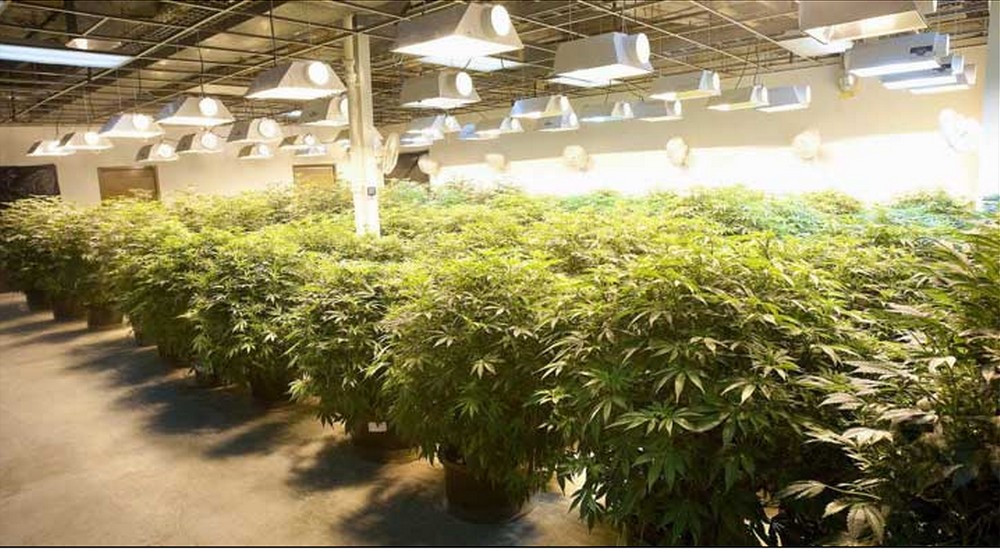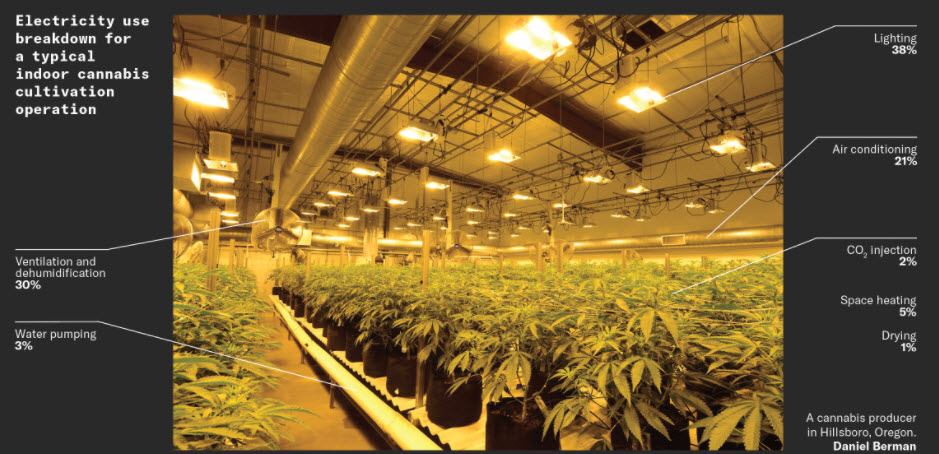
High Country News 31 May 2021
Location, location, location: That’s the deciding factor when it comes to the size of marijuana cultivation’s carbon footprint, according to a new study out of Colorado State University.
The paper’s authors, led by Hailey Summers, confirmed previous findings that indoor pot-growing gobbles up huge amounts of electricity and can cause high greenhouse gas emissions. Their research also quantifies emission differences from place to place: A kilogram of cannabis cultivated in Long Beach, California, for example, has a smaller carbon footprint than one grown in Denver, Colorado.
The reason? More energy is required to keep the indoor temperature and humidity at optimum levels in very cold or hot places than in more temperate areas. And California’s grid is virtually coal-free, while the power grid in Colorado and other Interior West states relies heavily on coal and natural gas, both of which emit large amounts of greenhouse gases.
CALIFORNIA
2,283: Kilograms of carbon emissions from growing one kilogram of cannabis in Long Beach, California.Kaneohe Bay, Hawaii, respectively, the lowest and highest in the United States. Power generation in Hawaii is mostly fueled by oil.
COLORADO
733,200 mwh: Estimated yearly electricity consumption by Colorado’s marijuana cultivators.
76,400: Estimated number of Colorado households that amount of energy could power for a year.
41,808 kwh: Monthly electricity consumption by a 5,000-square-foot grow facility in Boulder County. The average Colorado home uses about 800 kilowatt hours per month.
22 miles (35k) you could drive in a Prius on the amount of energy used to produce a one-gram joint.

READ MORE: https://www.hcn.org/issues/53.6/infographic-marijuana-cannabis-has-a-carbon-problem
